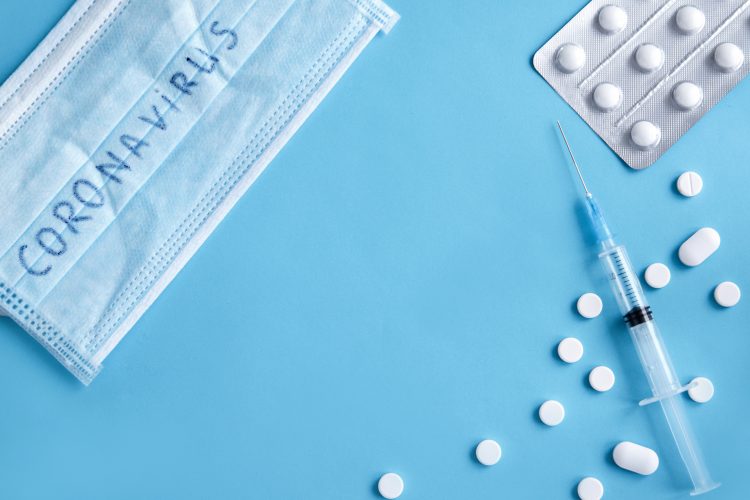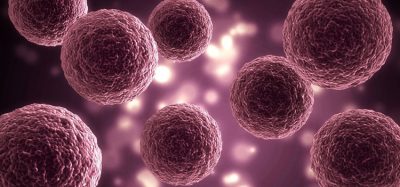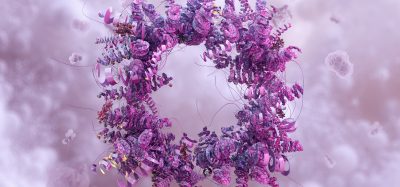Nafamostat inhibits SARS-CoV-2 infection, preventing COVID-19 transmission
Posted: 31 March 2020 | Hannah Balfour (Drug Target Review) | 2 comments
Researchers have demonstrated that Nafamostat mesylate (Fusan) can inhibit SARS-CoV-2 Spike protein-initiated membrane fusion at concentrations likely achievable and safe in patients.


Japanese researchers suggest Nafamostat mesylate (Fusan), a drug used to treat acute pancreatitis, could be repurposed to inhibit SARS-CoV-2, the virus causing the COVID-19 pandemic, from entering human cells.
According to University of Tokyo researchers, Nafamostat can prevent the fusion of the envelop of the virus with the host cell surface proteins, the first step in SARS-CoV-2 infection, at one tenth of the concentration required by Camostat mesylate (Foypan), which was recently identified by a German group as an inhibitor of SARS-CoV-2 infection.
Both Nafamostat and Camostat were developed in Japan as treatments for pancreatitis and other diseases and have been prescribed for many years, providing adequate clinical data accounting for the safety of the medications. The University of Tokyo plans to launch clinical trials in April 2020 evaluating the effectiveness of these two drugs for treating COVID-19.
Drug repurposing for COVID-19
Professor Jun-ichiro Inoue and Assistant Professor Mizuki Yamamoto from the Research Center for Asian Infectious Diseases at the University of Tokyo’s Institute of Medical Science identified Nafamostat as a strong candidate to fight COVID-19.
“Considering that SARS-CoV-2 infection is already spreading worldwide, drug repurposing, which searches for therapeutics among existing drugs with established safety records, seems to be extremely worthwhile,” Inoue said.
…the researchers speculated that the blood concentration of Nafamostat after IV administration would exceed the concentration needed experimentally to inhibit membrane fusion via the SARS-CoV-2 S protein”
The genomic RNA of coronaviruses such as SARS-CoV-2 is surrounded by an envelope composed of a lipid bilayer and envelope proteins. SARS-CoV-2 initiates human cell entry after the Spike (S) protein present on the envelope binds to a cell membrane receptor called the angiotensin converting enzyme (ACE2). The S protein is cleaved into two subunits, S1 and S2, by a human cell-derived protease, thought to be Furin. S1 then binds to its receptor, ACE2. The other fragment, S2, is cleaved by TMPRSS2, a human cell surface serine protease, resulting in membrane fusion. Both ACE2 and TMPRSS2 are therefore thought to be essential in airway cells for SARS-CoV-2 infection.
Inoue and Yamamoto reported in 2016 that Nafamostat could inhibit S protein-initiated membrane fusion by a related coronavirus MERS-CoV, which causes Middle Eastern Respiratory Syndrome (MERS). They demonstrated this using a Dual Split Protein (DSP) reporter fusion assay to screen a library of 1,017 US Food and Drug Administration (FDA)-approved drugs and a S protein-fusion assay to test how MERS-CoV infected cultured airway epithelial cell-derived Calu-3 cells.
In their latest study, published in Cell, the researchers established a SARS-CoV-2 S protein-initiated fusion assay and found that in the concentration range from 10 to 1000nM, Nafamostat suppressed SARS-CoV-2 S protein-initiated fusion in 293FT cells (derived from the human fetal kidney) ectopically expressing ACE2 and TMPRSS2. They also performed experiments using Calu-3 cells, where low concentrations in the 1-10 nM range of Nafamostat significantly suppressed membrane fusion.
The scientists also compared the effects of Nafamostat and Camostat, demonstrating that Nafamostat inhibited SARS-CoV-2 S protein-initiated fusion at a concentration less than one-tenth of that needed by Camostat.
The team concluded that Nafamostat is the most effective repurposed drug against SARS-CoV-2 S protein-initiated fusion among the protease inhibitors used in clinical practice and tested so far.
Future potential of Nafamostat and Camostat
Nafamostat is administered by intravenous infusion (IV). The researchers speculated that the blood concentration of Nafamostat after IV administration would exceed the concentration needed experimentally to inhibit membrane fusion via the SARS-CoV-2 S protein. Therefore, it is expected that Nafamostat will prevent SARS-CoV-2 from entering human cells. Camostat is an oral drug and the researchers suggest that blood levels after oral administration may be inferior to Nafamostat.
“Both drugs could be used alone, or in combination with other antiviral drugs that target separate processes needed for virus production, such as RNA replication or viral protein processing,” concluded Inoue.
Related topics
Analytical Techniques, Cell-based assays, Disease Research, Drug Development, Drug Repurposing, Drug Targets, Immunology, Protein, Proteomics, Screening, Therapeutics
Related conditions
Coronavirus, Covid-19, Pancreatitis
Related organisations
University of Tokyo
Related people
Assistant Professor Mizuki Yamamoto, Professor Jun-ichiro Inoue









Nafamostat is a wide spectrum protease inhibitor used in cardiology like aprotinin. Its range covers trypsin to factor Xa and kallikrein. As per this coverage, its indication is anti-fibrinolytic. In contrast, camostat mesylate is a narrow spectrum serine protease inhibitor and active against TMPRSS2. It has been in clinical practice for a long time in Japan for the treatment of the remission of acute symptoms of chronic pancreatitis. As a trial candidate for the treatment of COVID-19, an oral agent like camostat mesylate is a safest alternative. Potency and effectiveness are different concepts. An agent having an IC50 ten times lower does not mean that it would be superior to the other. As long as Emax is the same, potency should not be a critical concern. The most important thing, I guess, how extend we should expect a critical cardiovascular event from a wide spectrum protease inhibitor. As an anti-fibrinolytic, it might have serious cardiovascular complications. Factor Xa mimetic effects might adversely affect pre-existing ischemic conditions.
Dr. Tambay Taskin
Pharmacologist & Toxicologist
do you have an references to support the improved selectivity of camostat over nafamostat?